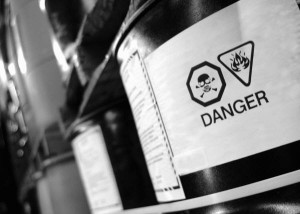 When you think about your work environment, does “safety” come to mind? If you’re like most plants, you probably know that there are things that happen in there that no one really wants to talk about: accidents.
When you think about your work environment, does “safety” come to mind? If you’re like most plants, you probably know that there are things that happen in there that no one really wants to talk about: accidents.
And, where are these accidents happening? Well, they can happen anywhere. But, one of the biggest risks is low-hanging pipes, which can be hazardous. Here’s how to mark them throughout your plant.
Labels and Legal Requirements
No matter what you do, there are almost certainly some requirements for labels that you need to follow. Most people aren’t following these to the “t” but they are trying. If you need help identifying where you’re missing the boat, you should contact local and state regulators. But, in most cases, here is what they will tell you:
Pipe marking labels need to be effectively communicated to everyone who will read them, and they must convey the contents of the pipe and any hazards in them, like high pressure or temperature.
The legend should be short and easy to understand. For example, if you mark a pipe with “Steam 100 PSIG,” it means that the contents of the pipe are under pressure and that it is really hot. An arrow would be used in conjunction with the legend to show an individual which direction the material flows in the pipe.
In this way, you can be sure that you’re properly informing employees and inspectors about what’s in your plant and what they need to concern themselves with and what’s safe.
ASME A13.1 was updated in 2007, and it was reaffirmed in 2013. It’s a color-coded chart that uses six standard color combos, along with user-defined combinations, to help identify pipes. The colors are based on the contents and, usually, the colors are indicative of the hazard-level of the contents in the pipe.
For example, Fire-quenching fluids are typically marked with a white text on a red background. Flammable fluids are typically white text on a brown background. Each color is important because it identifies some unique aspect of the material inside the pipe, which is unknown upon casual observation.
Toxic and corrosive fluids are generally marked with black text on an orange background, while flammable fluids are marked with black text on a yellow background.
Portable, cooling, boiler feed and other water is marked with white text on a green background. Compressed air is marked with a white text on blue background.
Finally, user-defined substances can be marked on either white text on a purple, gray, or black background, or black text on a white background.
These are the primary colors used, and they are legally required by your organization.
The Label Size
A word about label size: The labels must be readable easily and must not be obscured by tags or other markings on the pipe. They also cannot be obscured by valves, covers, levers. Labels should be positions on the pipes so they are readable from a normal angle of approach.
In most cases, this is eye level. If the pipe is below eye level, then the label should be placed above the centerline. If the pipe is overhead, the label should be below centerline. The reason for this is that these positions are generally easier for most individuals to read.
Furthermore, labels should be located adjacent to valves and fittings, and to changes of direction on both sides of a wall or floor penetration. They should also be spaced out at regular intervals. Special gas pipe stickers should be used that will adhere securely to the pipe, and which will not come off due to changes in temperature, humidity, or moisture levels.
Conclusion
Unmarked pipes are dangerous to the general population, to employees, and even to property. Accidents and injuries often arise out of either ignorance about what’s in a pipe, or because contents are potentially or inherently dangerous and individuals are unaware of how to handle this danger.
When an employee does not know what is inside of a pipe, how is he supposed to conduct himself around it? What if the pipe needs servicing, or if something near the pipe requires servicing?
Property surrounding the pipe may also need to be prepared to protect it from an accidental rupture or failure of a valve in the pipe. By marking and identifying pipes, errors and accidents can be prevented and it makes work and maintenance easier — preventing many of the accidents we routinely see on job sites.
Learn more
In spite of advances in technology and an ever increasing societal demand for greater conservation of resources, water loss is a sobering problem ...
Being the owner of a small business can be quite a stressful and complicated job. There are a number of things you have to do in a small business ...
Ok tough guy, think it’s not cool to wear a hard hat? Think you can survive a pipe wrench falling on your head from 100 feet above? Think again. Y ...
Hard hats are considered the most commonly used form of PPE as dedicated by OSHA. Whether a worker is conducting a job in construction, manufactur ...
PowerPoint has been around for decades now, but there's still an art to creating a dynamic presentation that not many people have mastered. Whethe ...







